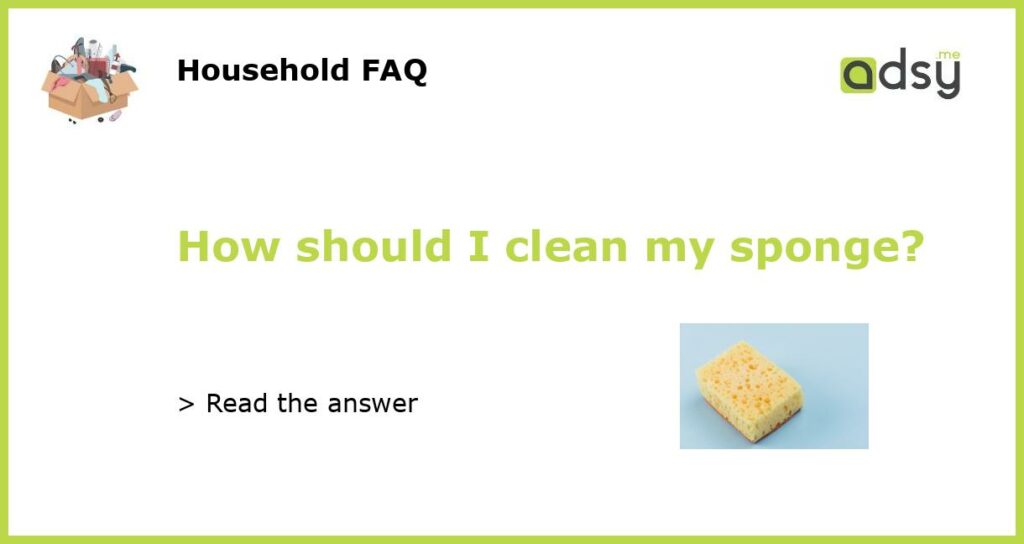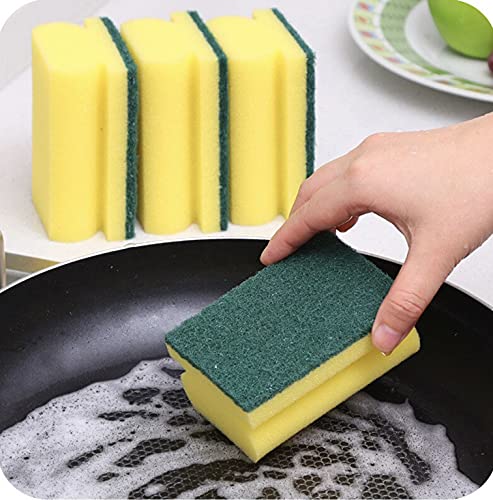Why Cleaning Your Sponge is Important
Before we delve into the different methods of cleaning a sponge, let’s first understand why it is important to do so. Sponges are a breeding ground for bacteria and other pathogens. These microorganisms can thrive in the warm and damp environment of a sponge, making it a potential source of contamination. When you use a dirty sponge to clean your dishes or countertops, you are essentially spreading these bacteria onto the surfaces you are trying to clean. This can lead to foodborne illnesses and other health issues. Therefore, it is crucial to regularly clean your sponge to maintain a clean and safe kitchen.
Using Dish Soap and Hot Water
One of the most common and effective ways to clean a sponge is by using dish soap and hot water. Start by thoroughly rinsing the sponge under running water to remove any loose particles and debris. Then, apply a few drops of dish soap onto the sponge and work it into a lather by squeezing and rubbing the sponge together. Make sure to cover all areas of the sponge, including the edges and corners. Rinse the sponge again under hot water to remove any soap residue. Finally, squeeze out any excess water and allow the sponge to air dry in a well-ventilated area. This method helps to remove dirt, grease, and some bacteria from the sponge.
Microwaving Your Sponge
If you’re looking for a quick and easy way to sanitize your sponge, microwaving it can be a viable option. Before microwaving, make sure the sponge is wet to avoid a fire hazard. Place the damp sponge in the microwave and heat it on high for about one minute. Be cautious when removing the sponge from the microwave as it will be hot. The heat from the microwave kills most of the bacteria present in the sponge. However, it’s important to note that this method may not be effective against certain types of bacteria like C. difficile. Additionally, microwaving a sponge can cause it to degrade faster, so use this method sparingly.
Bleach Solution
If you want to ensure that your sponge is thoroughly disinfected, a bleach solution can be used. Fill a basin or sink with water and add one teaspoon of bleach per gallon of water. Soak the sponge in the bleach solution for at least five minutes, making sure it is fully submerged. This method kills a wide range of pathogens but may not completely eliminate food residue or grease. After soaking, rinse the sponge under running water to remove any remaining bleach. Allow the sponge to air dry completely before using it again. It’s important to exercise caution while handling bleach, wear gloves, and take necessary safety precautions.
Vinegar Soak
If you prefer a more natural approach to cleaning your sponge, you can use vinegar. Fill a bowl or container with equal parts water and white vinegar. Submerge the sponge in the solution and let it soak for at least five minutes. Vinegar is known for its antibacterial properties and can help kill some bacteria present in the sponge. After soaking, thoroughly rinse the sponge under running water to remove any vinegar smell. Squeeze out excess water and allow the sponge to air dry completely. Keep in mind that this method may not be as effective as using a bleach solution but can still help sanitize the sponge to some extent.






